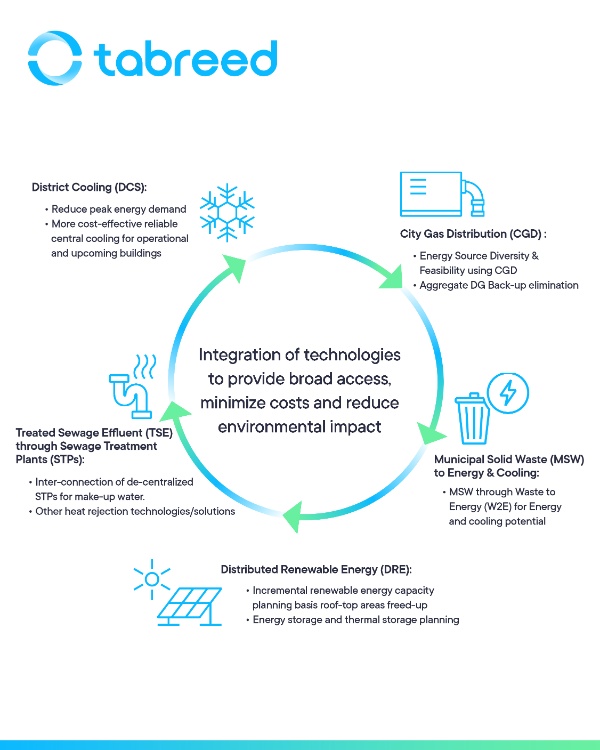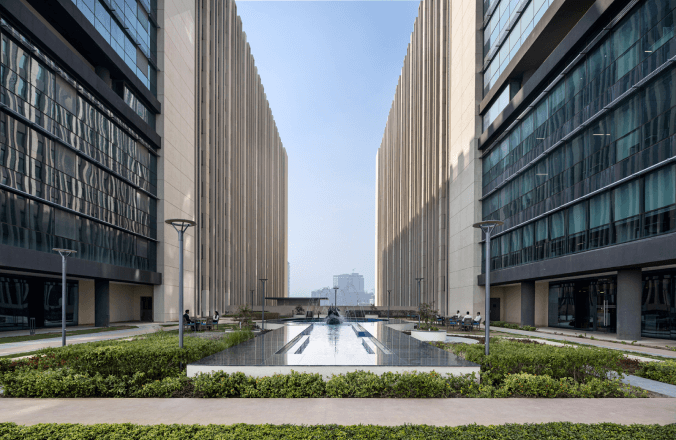The pivotal role cooling can play for meeting company ESG objectives 27 May 2024
ESG reporting has brought the conversation on “Net Zero” from the halls of multilateral organisations to corporate boardrooms across the world. Over the past decade, companies have been looking to better their ESG records. In India, since 2023, the Securities and Exchange Board of India (SEBI) has mandated the top 1000 listed companies (by market capitalisation) to file a business responsibility and sustainability report (BRSR) that discloses environmental data including energy, emissions, water, and waste. Starting from financial year 2024-2025 ESG disclosures are also applicable for the value chains of the top 250 listed entities (by market capitalisation) on a comply-or-explain basis.

Large corporations can look to cooling systems in their building infrastructure and operations to improve ESG performance across BRSR-defined KPIs of water & energy footprint, associated GHG emissions, circularity of resources, in addition to other social- economic parameters. In India, the buildings’ sector (residential and commercial) is responsible for 33% of total electricity consumption, projected to increase to 55% demand of total electricity generated by 2047. The building and construction sector also accounts for 32% of the total national GHG emissions inventory. Of a building’s total demand for energy, 57% is towards cooling requirements alone. As per the 2023 World Energy Outlook of the International Energy Agency (IEA), India experienced a 21% increase in electricity consumption from space cooling between 2019 and 2022. Being a developing and a rapidly urbanizing country, India expects to see a 1.5-2x increase in area under building construction in 2027, as compared to 2017, which combined with heat generation and Urban Heat Islands (UHI) effect from vehicles, appliances (air conditioners, refrigerators, etc), and decline in tree cover will further increase the electricity demand for cooling.

Businesses, especially those with large campus requirements, have the capacity to, on one hand, adopt innovative building design that incorporates passive measures to reduce the upfront cooling demand on a square metre basis. On the other, they are also well positioned to adopt disruptive cooling technologies such as district cooling/cooling as a service (CAAS) to meet residual cooling demand in a sustainable manner. Tabreed has demonstrated success across several ESG metrics in its existing projects through the Cooling as a Service model. For instance, at Tata Realty’s Intellion Park in Gurugram, Haryana, cooling system designed, built and operated by Tabreed, is able to serve 700 sft of area per ton of cooling to achieve an energy performance index of 70-90 kWh/m2/year.
District cooling also allow for integrated solutions that can help achieve ESG requirements beyond energy. For example, district cooling plants can utilize grey water from on-site Sewage Treatment Plants (STP) which is generally discharged straight into rivers and lakes. Similarly, district energy integrated with waste to energy plants & city gas distribution plants can first, allow utilization of waste heat for cooling, second, reduce grid power requirement, and third, replace highly polluting Diesel Generator (DG) sets in case of grid failures by creating redundancy. The possibilities for using district energy as a means to achieve integrated solutions that improve resource efficiency from a systems’ lens are limitless. There is an opportunity here for businesses to not only become more sustainable & cost effective, but truly move the needle on energy and resource efficiency for the country.

Sudheer Perla
Managing Director, Tabreed Asia
Country Manager, India, Tabreed


